Whenever I revisit my earliest RPG loves, I often find that the thick fog of ’90s nostalgia does more harm than good. I’ve spent far too much time fondly recalling the way I saw certain games as a kid with a big imagination, only to realize some of those adventures don’t quite measure up in the same ways now.
As much as we like to ask for remakes of beloved classics like Chrono Trigger or Final Fantasy IX, the thought of such remade experiences makes my jaw reflexively clench. Messy remakes not only muddle fond memories, they occasionally blunder the wonders and themes of the originals. And while I’ve embraced more remasters and faithful from-the-ground-up rebuilds over the last few years, I always feel a tiny pit of anxiety looming when RPGs I adored roll back into the spotlight.
Thankfully, Star Ocean: The Second Story R absolutely bucks that trend. Ahead of its November 2 launch, I’ve spent ample time with Star Ocean 2’s ambitious remake, and the adventure remains a delight more than 20 years later. In fact, The Second Story R is a rare trip down memory lane that modernizes the original game while retaining all the qualities I loved so much as a child.
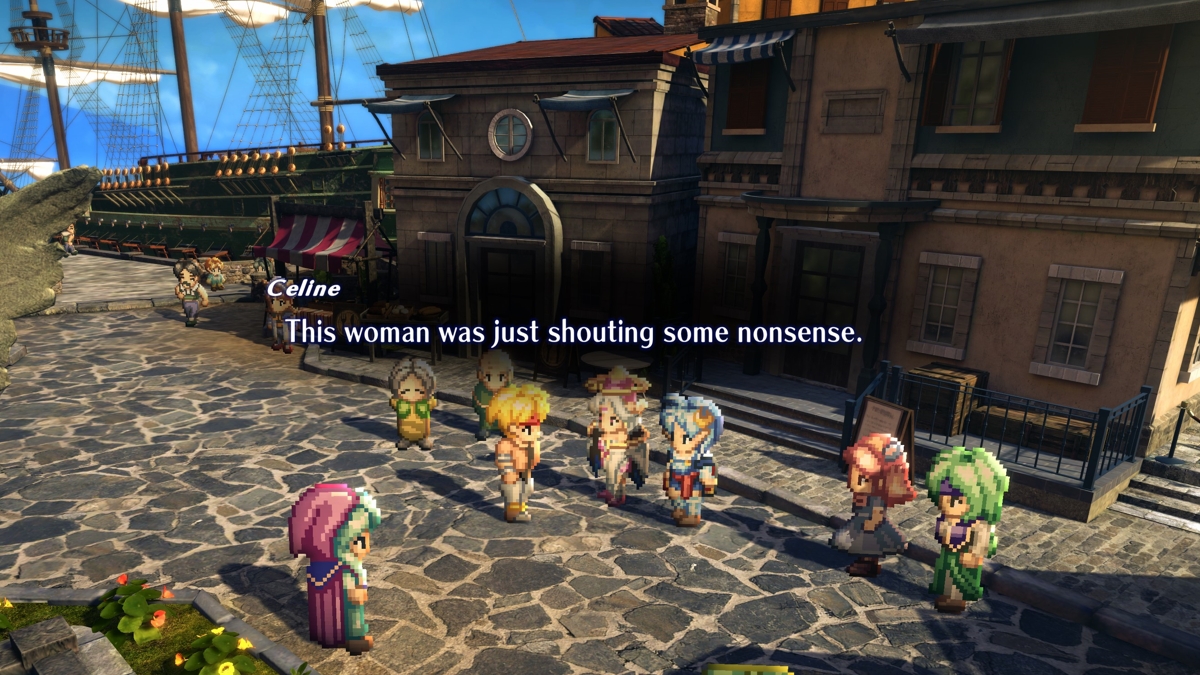
Star Ocean: The Second Story R (PC [Reviewed], Switch, PlayStation 4, PlayStation 5)
Developer: Gemdrops, Inc
Publisher: Square Enix
Released: November 2, 2023
MSRP: $49.99
A tale of two worlds
While I’m admittedly a fan of all things Star Ocean — yes, all things — The Second Story on PlayStation remains my favorite to this day. The 1998 sequel didn’t invent every formula the space-faring series follows, but it definitively raised the bar for Action RPGs. The 2023 iteration in Second Story R is only additive, polishing away the imperfections that often come with decades-old ideas.
In the spirit of a new adventure into the unknown, I played as Claude C. Kenny in my initial playthrough, and, whoops, that’s something I should’ve done back in the day. The Second Story R still sports its dual-protagonist system, and though I was endlessly faithful to Rena’s Dias-exclusive route ages ago, I see how Claude’s introduction may better set the tone for anyone unfamiliar with some of Star Ocean’s twists and tricks.
Either way, pick who you want. The Second Story R remains just as packed with the same charm, drama, and existential musings as its ‘90s and early 2000s RPG contemporaries. You’ll dabble a little in the ethical dilemmas posed by space travel, fight otherwordly beasties, save the universe, and still make time for late-night angst at the inn. When I say it’s got the staples of the greats, I mean that in every regard.
Bright and bloomy
Claude, Rena, and the rest of their gang would be nothing without the original’s enchanting static backgrounds and expressive sprites. Despite adoring the look and feel of modern throwbacks like Octopath Traveler 2, I had my reservations about how that 2D-HD aesthetic would affect a world already so endeared. I’ve been burned too many times seeing timeless pixel art ruined with blurry abominations and painfully performing ports.
However, if the present were to apologize to the past, I reckon the apology would look something like The Second Story R. Those overly animated sprites and whimsical environments added so much soul to ’90s RPGs, and Star Ocean completely retains those qualities. Rather than fix what isn’t broken, it instead merges that beautiful art style with 3D landscapes crafted fittingly to memory. The cleaned-up dialogue and translation certainly help in this case, too.
If you recall an NPC there and a town here, chances are Second Story R remembered it, too. It’s certainly no one-for-one journey, but the big pieces all remain. Frankly, if I hadn’t pulled up maps to compare this remake against the original, I would’ve told you they’re both the same content-wise. Thankfully, my recollection of the world map aided me through my second pass, which is better served by new designs, lighting, and animations.
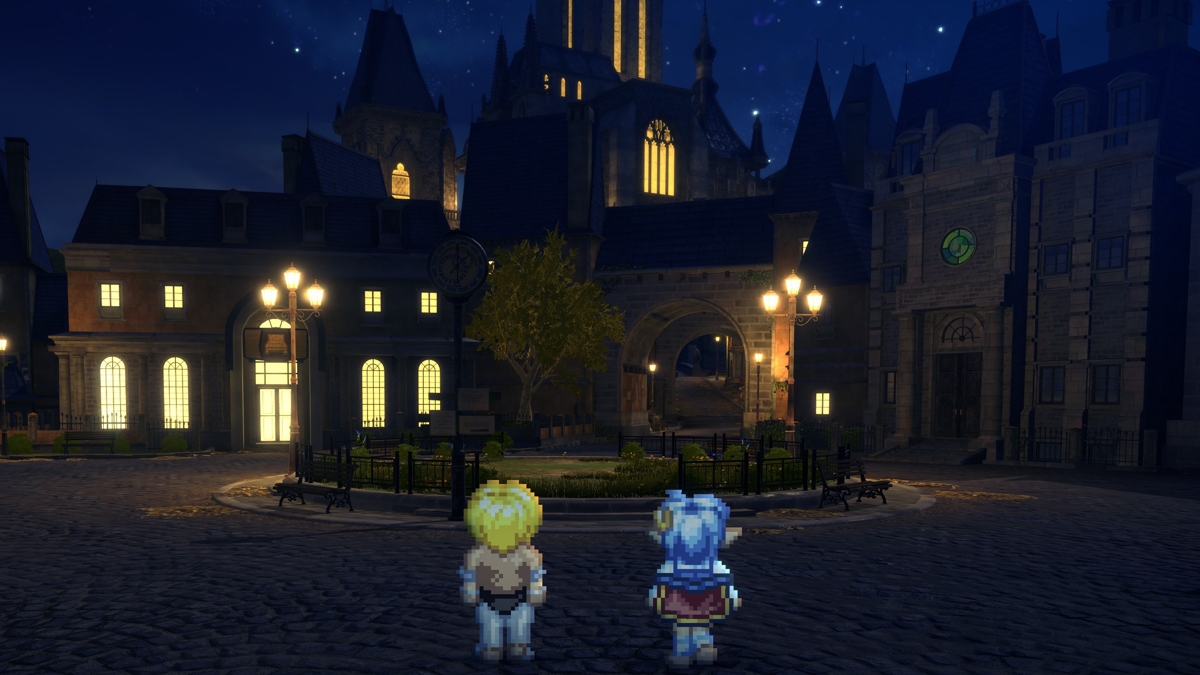
Better served is no exaggeration, either. While I love some of those old, open-world maps from way back then, the new look makes retreading the same handful of locales less of a slog. There’s water refraction! And clearer details in the distance dotted with defined landmarks! There’s also enough bloom to light the world for miles, but honestly, I dig the heavy-handed lighting. It’s another layer to the fantastical here, which makes every frame of those introspective or exciting story moments pop even more.
That said, a few of those moments don’t hit quite the same as they did when I was a kid. That resounding thud my heart makes as it hits the floor after one dramatic, early story sequence isn’t as loud now as it was back in the day. Perhaps it’s thanks to the bitterness of age, or maybe those PlayStation graphics just made the situation look far more dire than it was. Fortunately, this wasn’t a problem I often encountered. Second Story R’s makeover stays faithfully stunning overall.
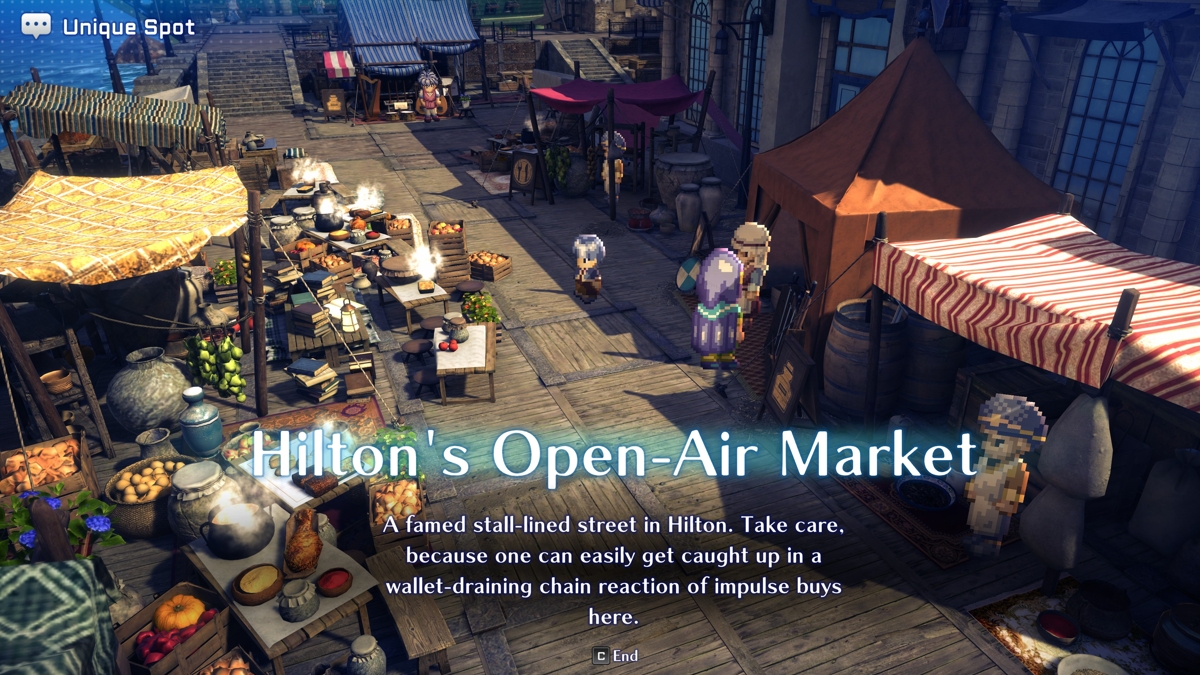
Third Evolution
Meanwhile, Second Story R spares no expense in modernizing its mechanics. And though I have a heart for those original visuals, you’ll find no sentimentality from me when it comes to negotiating those tired and trodden systems. For example, someone, somewhere, asked why we spent five to seven business days moving between towns and dungeons in the original game. As a result, the remake wastes no time offering you the means to transport anywhere with Fast Travel. Don’t worry — the Bunny Call remains. If you know, you know.
My delight doubles when you couple Fast Travel with The Second Story R’s new map markers and the original game’s Private Action (PA) system. Star Ocean’s PAs are mini cutscenes between party members, with some only available under certain circumstances. If you aren’t careful, they’ll disappear if you move the plot along too far. That always felt punitive considering there are ending cutscenes locked behind triggering dozens of these events, with no clear indication of how these moments impact your party members or their relationships with each other. If you weren’t following a guide back then, those systems were purely vibes-based.
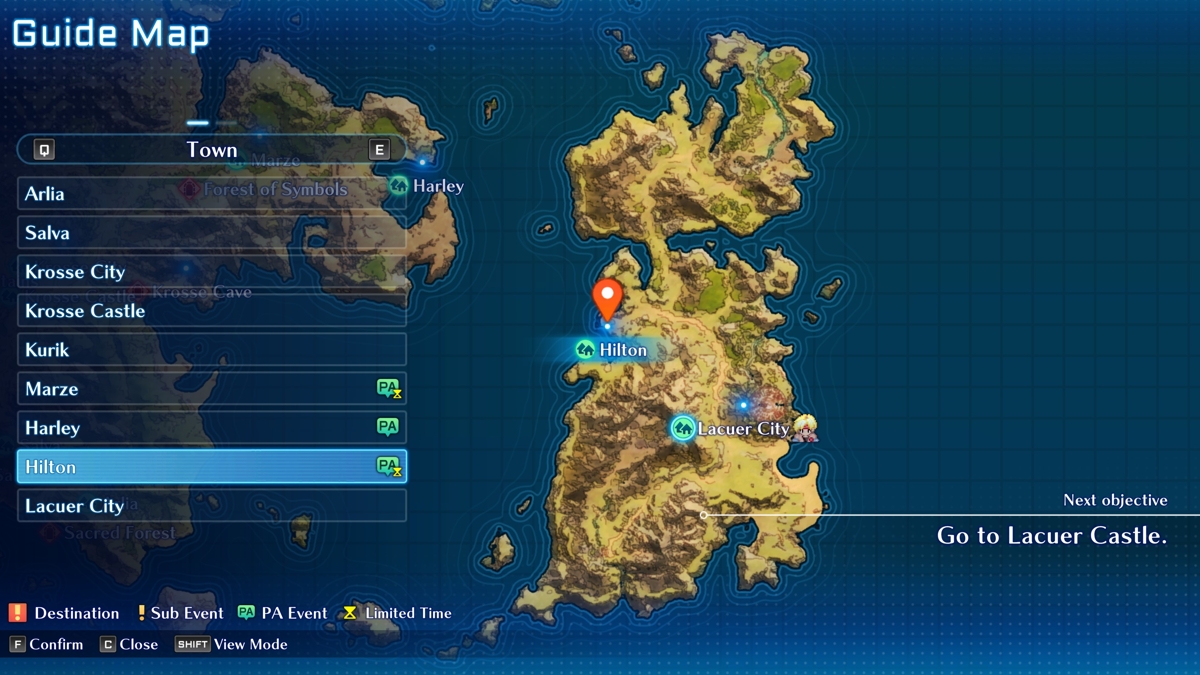
Now, instead of anxiously exploring for these secrets between story beats, the Fast Travel map flags sub-events and Private Actions for your attention. They aren’t cleverly disguised or ambiguous; scenes gated by time limits are presented in clean, straightforward directions that don’t activate my fight or flight from clutter. Additionally, you can freely toggle in and out of Private Action mode now. On the PlayStation, I remember leaving and reentering cities between each cutscene — praying I’d exhausted any sequences in the zone before I was locked out.
An RPG of Second Story’s scope was, and still is, a lot of trial and error. But when you remove barriers that feel more like mean-spirited time sinks, the error part of that equation doesn’t aggravate or demoralize its player into begrudgingly moving on or hitting reset with a sigh.
In with the new
In the past, I’d never recommend playing the original PlayStation incarnation of Star Ocean 2 without an arsenal of decades-old guide tabs cluttering your browser. However, I’m perfectly comfortable recommending Second Story R without an encyclopedia of resources now. Sure, you may miss out on some min-maxing, but I fumbled my way through Claude’s story with the hazy memory of Rena’s campaign lighting the way. My run even included easily recruiting two party members — Opera and Ernest — that I didn’t even know existed in the original game. I realize there are 20-something years separating the occasion, but let’s chalk it up to streamlined designs.
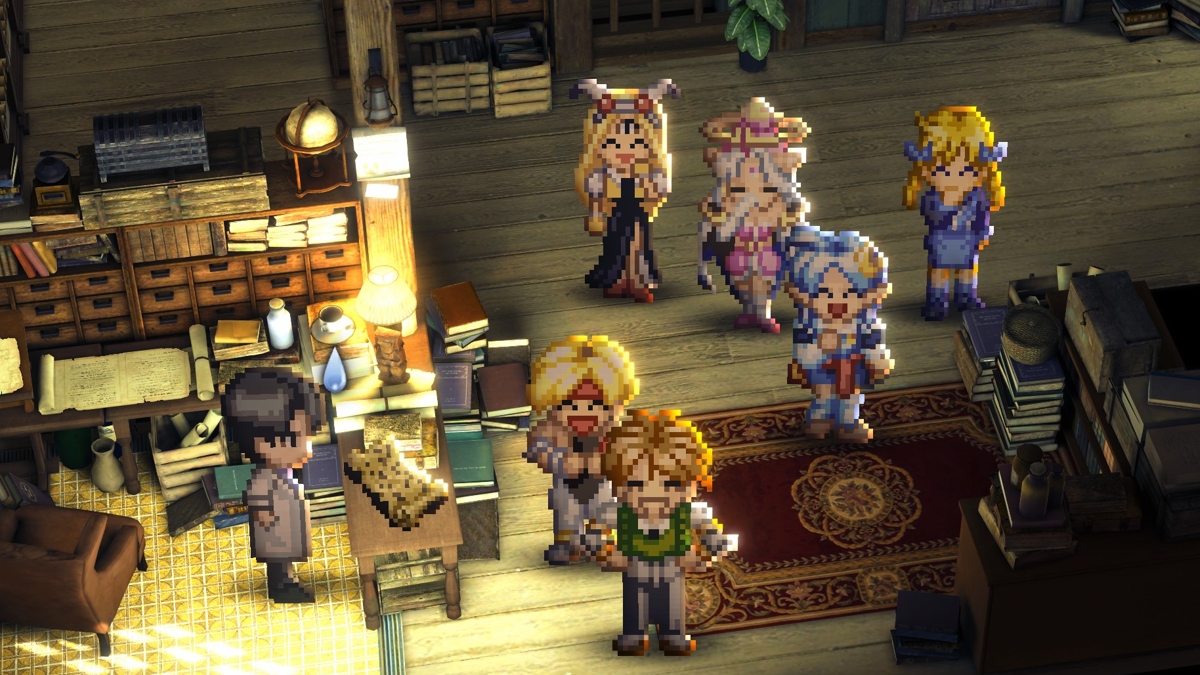
Quality of life tweaks extend beyond the broader world and into character menus too. I can double-check party member relationships between events with handy heart indicators, giving me a clear sign to reload when I’ve upset Celine again. The rest be damned, I’m just trying to make her and Opera happy.
I didn’t notice any changes to recruitment paths or party capacity. However, there’s a new system to implement sidelined characters through support-like functions called Assault Actions. If you’ve ever played a fighting game that lets you tag in a second character for an attack, it’s much of the same here.
Assault Actions assign slots to party members you’ve retired, providing a strategic helping hand on a limited cooldown. Along the way, I picked up a few key items, unlocking visitors from other entries, too. They didn’t impact the world beyond battle, but I do love being a guy named Claude C. Kenny summoning another guy named Fayt Leingod to back me up — very Star Ocean.
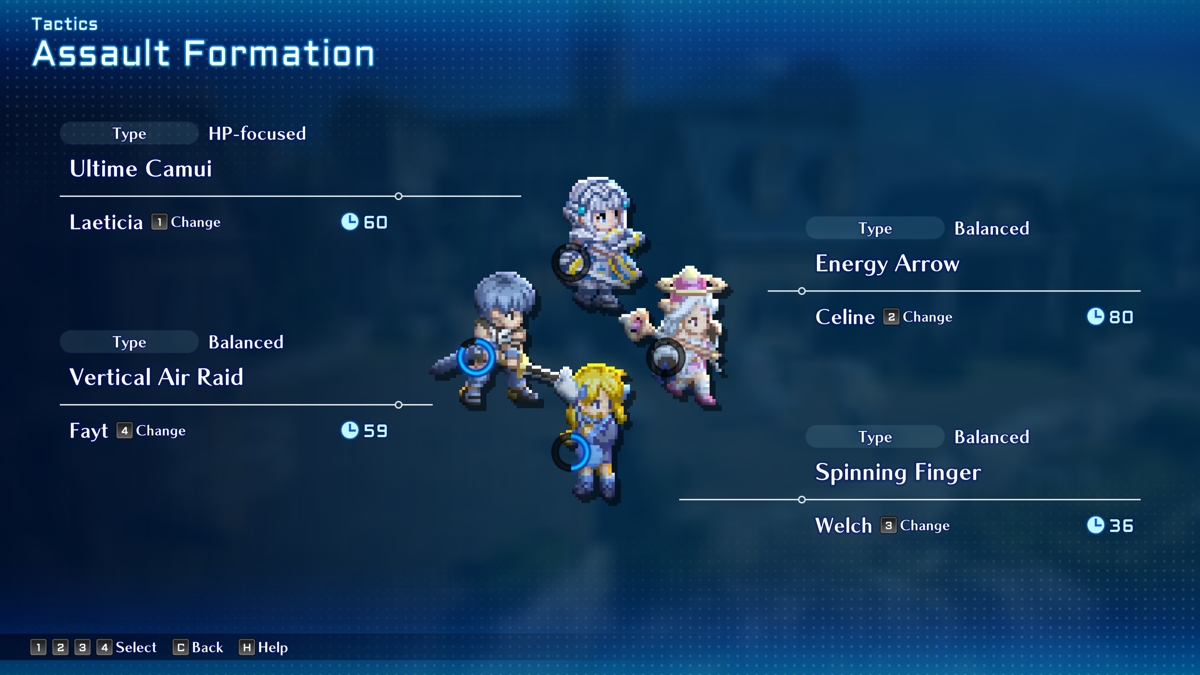
Keep the fluff
Perhaps the affair could have felt much shorter since Gemdrops’ take on Second Story streamlines content without major sacrifices. But the developer and Square Enix added to its bulk, too. Item Creation and Specialties — the game’s plethora of specific crafting systems and other extras — remain, but with a few extra ingredients.
I found myself straying off dozens of times. Not for Private Actions or missable characters, but so I could chip away at the RPG’s new questing features that propelled those mechanics along. Guild Missions offer to-do lists between cities, assigning you special crafting projects that double as a handy way to encourage experimental play.
Challenge Missions build upon that with four difficulty options — they’re like mini-achievements. For someone who often complains about frivolous bloat embedded within the genre, I sure found myself enamored with completing goals like composing 15 songs or reaching max rank Master Chef before it ever mattered. Second Story R even adds fishing to the mix, and while there’s nothing even marginally special there, I sure did embark on lengthy voyages to complete my fish database.
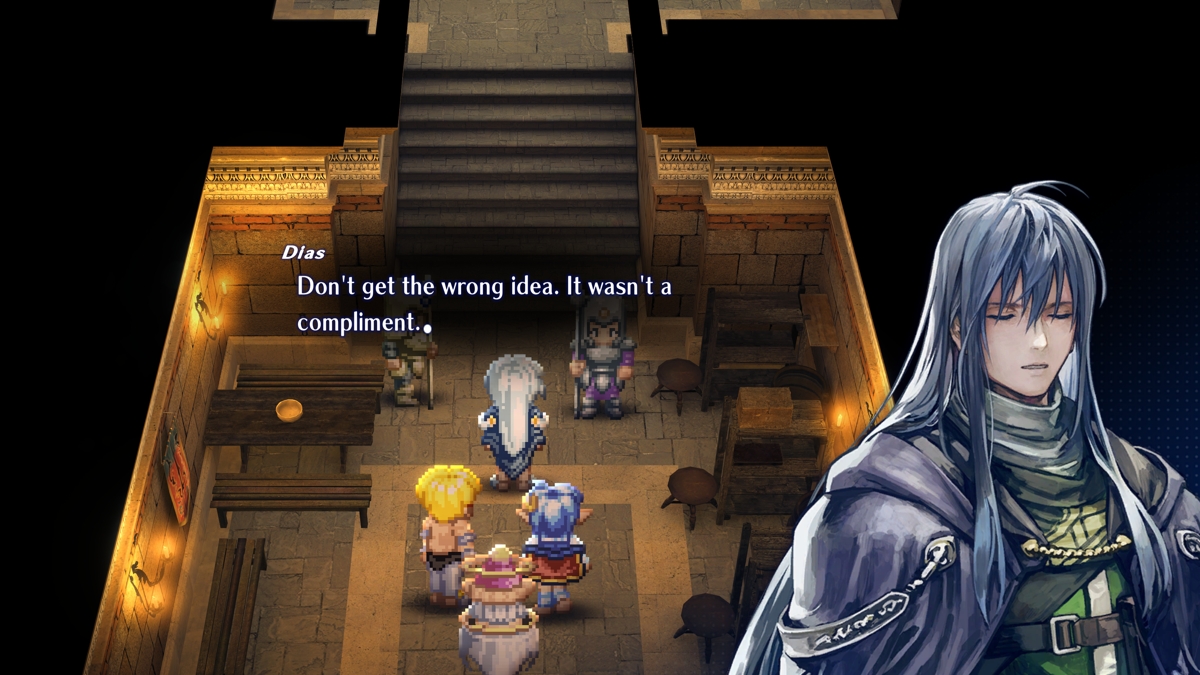
A Divine Force
Over the years, Star Ocean never quite blossomed into a series so universally beloved as some of its RPG siblings. The PSP editions offered a spark of hope that I’d see the name return with less divisive staples to the genre, but generations of consoles came and went with newer games only souring the name’s reputation. I’ve spent decades insisting that Till the End of Time isn’t so bad if you simply ignore half of it. But truthfully, it’s only with an earnest sense of cheek I remind you of the series’ goofier side.
Star Ocean 2, by comparison, requires way fewer asterisks to recommend. And if you ever wanted to know why so many fans still continue to stick up for this series, this is the game that will explain it. It was a classic when it came out decades ago, and it’s still a classic today. Even if you don’t root for the series after playing this one, it’s still a game that every RPG fan should check out. And with the remake, there’s arguably never been a better time to experience Claude and Rena’s stories for yourself.
Star Ocean: The Second Story R recaptures all the otherworldly wonder of its PlayStation predecessor. The rough edges of the original are now smooth to the touch, and the enhanced visuals amplify that classic pixel art aesthetic in a way that few remakes pull off. It’s a thoughtful snapshot encapsulating RPGs of the era, retaining all the passion and whimsy I remember so fondly. I loved this look back at Star Ocean‘s past, and I hope this marks a new beginning for the series’ future.
[This review is based on a retail build of the game provided by the publisher.]









